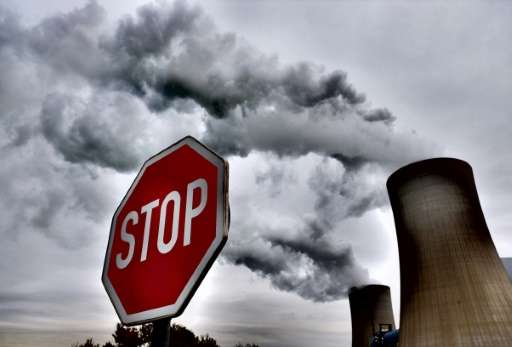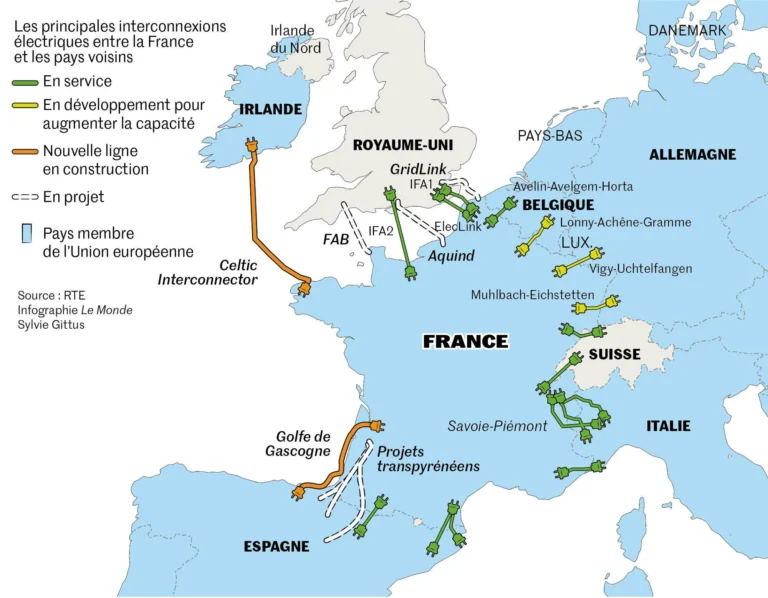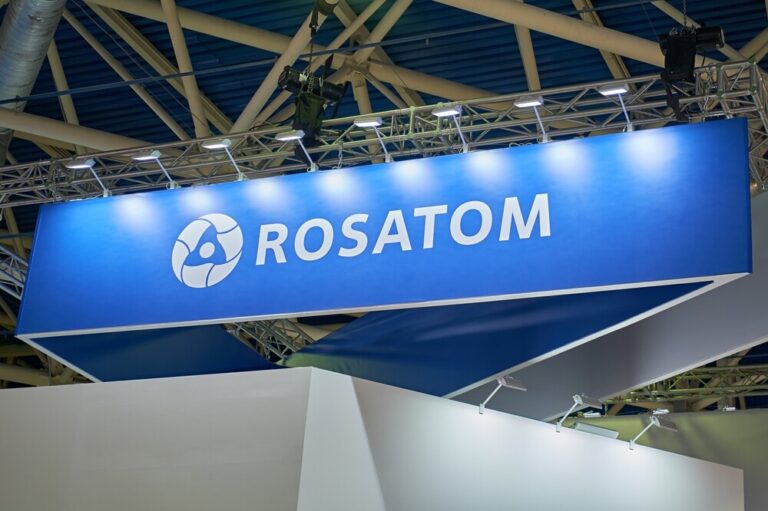
delignification. Image source: https://phys.org/news/2016-03-coal-bn-people-greenpeace.html
Greece is at a critical juncture in its energy future. The decision to delignitize, or phase out lignite-fired power plants, is one of the country’s most significant environmental and energy challenges. As the country seeks to reduce its carbon footprint and align with the European Union’s climate goals, alternative energy sources are being sought that could replace lignite. One option that is being discussed internationally, but remains controversial, is nuclear power. In this article, we will examine whether nuclear power could be part of the solution for Greece’s delignitization.
The current status of delignification in Greece
The timetable and objectives
In 2019, the Greek government announced an ambitious plan for full delignitization by 2028, a timeline that was later accelerated to 2025. According to this plan, all lignite plants are to be phased out, with the exception of the under-construction Ptolemaida V plant, which will initially run on lignite and then be converted to use natural gas.
Challenges of transition
Delignification faces significant challenges:
- Energy security: Lignite has traditionally been a pillar of energy self-sufficiency for Greece, as it is a domestic natural resource.
- Socio-economic impacts: Regions such as Western Macedonia and Megalopolis are economically dependent on the lignite industry.
- Need for replacement: Reliable and economically viable alternatives must be found for the production of the 4-5 GW of electricity currently produced from lignite.
- Ensuring network stability: The penetration of renewable energy sources (RES) requires parallel development of storage and backup systems due to their variability.
Nuclear energy as an alternative: Advantages and disadvantages
Advantages of nuclear energy
- Low carbon emissions: Nuclear power plants produce minimal greenhouse gas emissions during their operation, contributing substantially to addressing climate change.
- High energy density: Small amounts of nuclear fuel can produce huge amounts of energy, making the technology highly efficient.
- Stable production: Nuclear plants operate continuously, regardless of weather conditions, providing reliable baseload power.
- Long lifespan: Modern nuclear reactors are designed with a lifespan of 60+ years, offering long-term energy security.
- New technologies: Small Modular Reactors (SMRs) present improved safety features and lower investment costs.
Disadvantages and challenges
- High initial cost: The construction of nuclear power plants requires huge capital investments and often faces cost overruns and delays.
- Nuclear waste management: Radioactive waste requires special long-term management and storage.
- Security risks: Despite significant improvements, accidents such as Chernobyl and Fukushima affect social acceptance.
- Geopolitical constraints: Dependence on imported nuclear fuel and technology creates new geopolitical dependencies.
- Seismicity: Greece's high seismic activity raises additional safety concerns.
Technical and geographical restrictions for Greece
Seismic activity
Greece is located in one of the most seismically active regions in Europe. Building nuclear facilities in such areas requires additional safety measures and special design, increasing costs and complexity. The Fukushima experience has shown that even advanced countries with high safety standards can face serious problems in the event of natural disasters.
Availability of water resources
Nuclear power plants require significant amounts of water for cooling. In a country already facing water scarcity challenges and with increasing impacts from climate change, the availability of water resources to cool nuclear reactors could be a limiting factor.
Placement
Finding a suitable location for a nuclear power plant in Greece is extremely complicated, considering:
- The high population density in coastal areas
- The tourist and environmental value of many areas
- The need for connection to the electrical grid
- The requirements for exclusion zones and evacuation plans
Economic parameters
Investment costs and financing
The cost of building a modern nuclear power plant is estimated at between €6-9 billion for a medium-sized unit (1-1.5 GW). At a time when Greece is trying to control its public debt, such an investment would require extensive international financing and possibly public-private partnerships.
Implementation time
From design to commissioning, a nuclear power plant typically takes 10-15 years. Given the target of delignitization by 2028, nuclear energy cannot be an immediate solution to replace lignite.
Cost competitiveness
Although the operating costs of nuclear power plants are relatively low, the total cost of production (LCOE – Levelized Cost of Energy) remains higher than that of renewable energy sources, especially wind and solar, whose costs continue to decline.
Alternative solutions for delignification
Expansion of renewable energy sources (RES)
Greece has an extremely high potential for renewable energy sources:
- Solar energy: With more than 2,800 hours of sunshine per year, Greece is among the countries with the highest solar potential in Europe.
- Wind energy: Areas such as the Aegean Sea offer excellent conditions for wind farms, both onshore and offshore.
- Geothermal energy: Areas such as Lesvos, Nisyros and Milos have significant geothermal potential.
- Hydropower: There are expansion opportunities for both large and small hydroelectric projects.
Energy storage systems
To address the variability of RES, Greece can develop energy storage systems:
- Pumped storage: Projects such as the Amfilochia complex (680 MW) and Amari, Crete (90 MW).
- Large-scale batteries: Their cost is constantly decreasing, making them economically viable.
- Green hydrogen: Hydrogen production by electrolysis from RES for long-term storage.
Interconnections and smart grids
Strengthening interconnections with neighboring countries and islands, such as the “Greater Interconnection” project of the Cyclades and Crete, can improve the utilization of RES and enhance energy security. At the same time, smart grids allow for more efficient management of electricity demand and supply.
Natural gas as a transitional fuel
Natural gas, with approximately 50% lower CO2 emissions compared to lignite, can be a transitional fuel. Projects such as the East Med pipeline and the liquefied natural gas (LNG) terminals in Alexandroupolis and Revithoussa reinforce this prospect.
International experiences and examples
Countries adopting nuclear energy
Countries such as France (70% of nuclear power generation), Finland (new Olkiluoto 3 reactor) and the United Kingdom (Hinkley Point expansion) continue to invest in nuclear power as part of their decarbonisation strategy.
Countries that reject nuclear energy
In contrast, Germany closed its last nuclear reactors in 2023, Italy rejected nuclear power in a referendum in 2011, while Austria and Denmark have also ruled out this option, focusing on renewables and energy efficiency.
The example of Portugal
Portugal, a country of similar size and economy to Greece, has achieved impressive RES penetration (over 60% of electricity production) without nuclear power, investing in wind and photovoltaic parks, as well as storage projects.
Legal and regulatory framework
Greek legislation
Although there is no explicit prohibition, the Greek legal framework does not include specific provisions for the development of nuclear power generation facilities. Extensive legislative initiatives and the creation of a specialized nuclear safety regulatory authority would be required.
European framework
The European Union has recently included nuclear energy in its “green taxonomy” as a sustainable investment under certain conditions, recognizing its contribution to tackling climate change. However, the final decision on its use remains the responsibility of member states.
International treaties
Greece has signed the Treaty on the Non-Proliferation of Nuclear Weapons and is a member of the International Atomic Energy Agency (IAEA), actively participating in international efforts to promote the safe use of nuclear technology.
Social acceptance and public debate
Public opinion in Greece
Polls show that a majority of Greeks oppose the development of nuclear power in the country, with concerns centered on safety and waste management. The proximity to the Kozloduy nuclear power plant in Bulgaria has already raised concerns in northern Greece.
The need for informed dialogue
Any discussion on the introduction of nuclear energy into the Greek energy mix would require an extensive, transparent and scientifically informed public debate. Informing and involving local communities is crucial to ensuring social consensus.
Conclusions
Delignification in Greece is a complex process that requires careful planning and a combination of different technologies and policies. Nuclear energy, despite its advantages in terms of low carbon emissions and stable production, presents significant challenges for Greece:
- Time frame: Nuclear power requires long-term planning and implementation, making it unsuitable for immediate replacement of lignite within the current delignification timetable.
- Geological challenges: Greece's high seismicity raises serious safety issues and increases construction and operating costs.
- Economic sustainability: High investment costs and frequent budget overruns make nuclear energy less competitive compared to RES, whose costs are constantly decreasing.
- Alternative options: Greece has a rich potential for renewable energy sources which, combined with storage systems and smart grids, can provide a more economically and environmentally sustainable alternative.
- Social acceptance: The lack of widespread public support for nuclear power is a major obstacle to its adoption.
In summary, while nuclear power could theoretically contribute to delignification and greenhouse gas emission reduction, Greece’s particular circumstances make other options more appropriate. A strategy based on massive RES deployment, complemented by energy storage systems, smart grids and limited use of natural gas as a transitional fuel, appears to offer the most realistic and sustainable path to achieving delignification.



